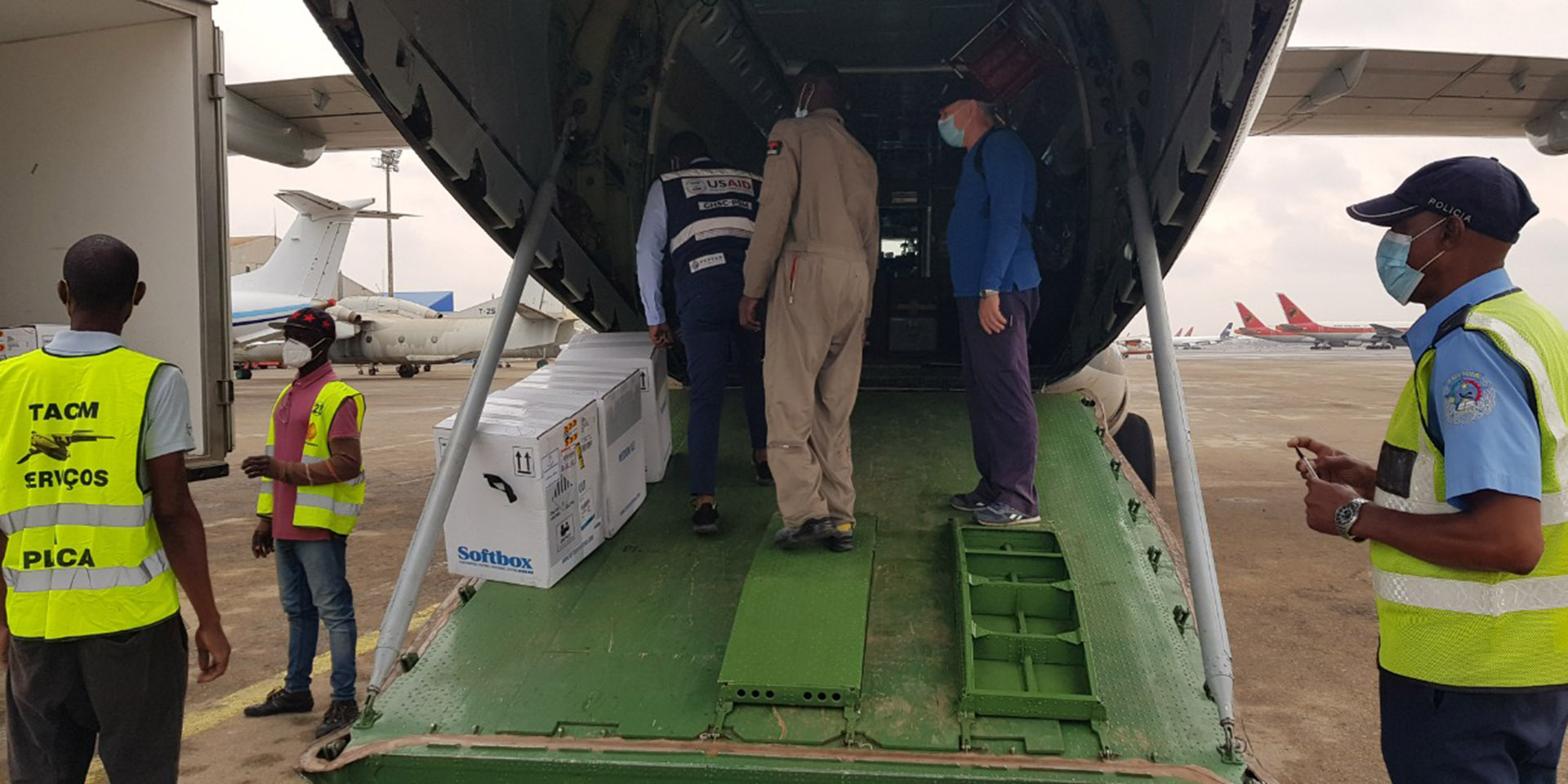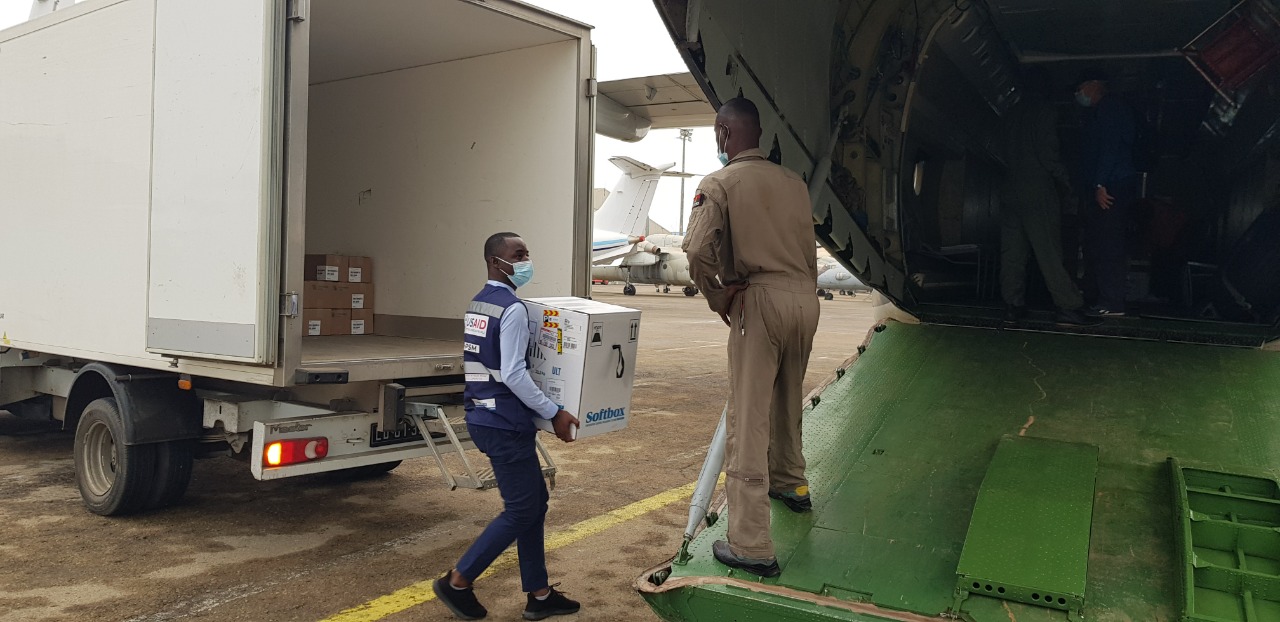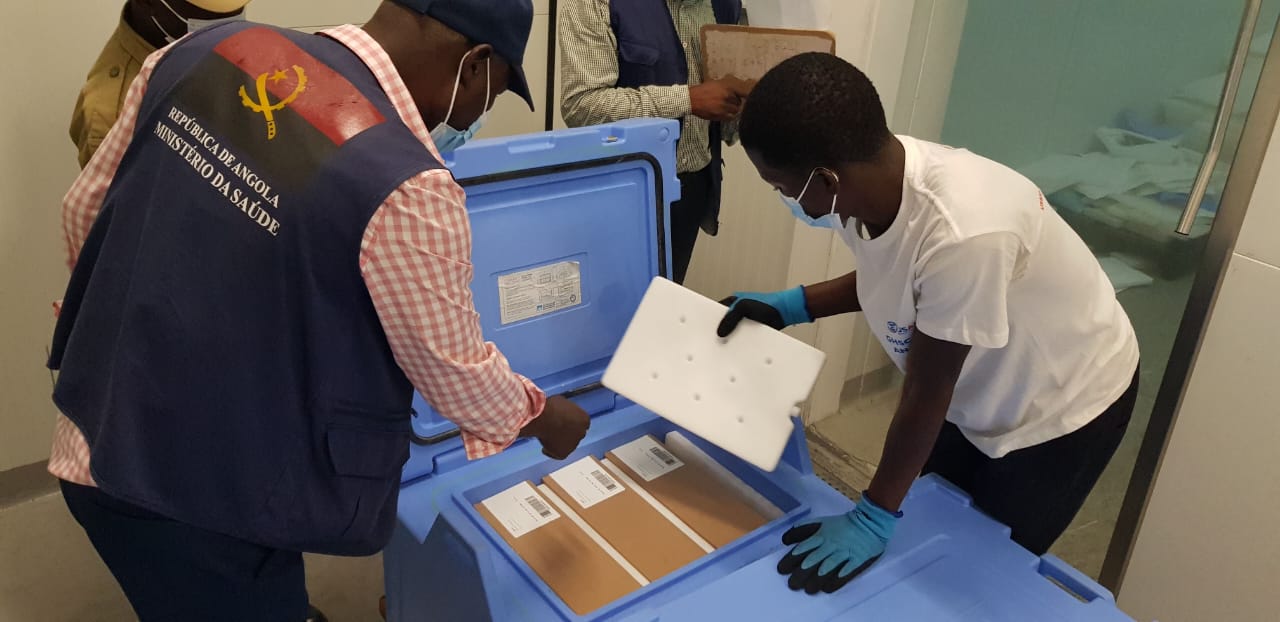The work began with the MOH procuring vaccines and receiving donations from other partners such as the U.S. Government through USAID. GHSC-PSM worked with UNICEF and the World Health Organization (WHO) to conduct quality inspections and validations upon arrival to ensure the vaccines meet international and country-level quality specifications before being received into central storage at the Central Vaccine Deposit.
Vaccines move along the cold chain – according to the plan developed by the MOH and its partners – from the central level to the provinces and from the provincial level to the municipalities, adhering closely to standard processes of cold chain distribution.
Proper storage, handling, and distribution of COVID-19 vaccines require a number of warehousing tools and equipment: specialized ultra-cold freezers; refrigerated chambers for defrosting, mini solar and electric freezers for portable storage; and isothermal boxes, accumulators, and other cooling agents for transit to the final destination.
The use and maintenance of vaccine storage equipment requires qualified personnel. For this purpose, GHSC-PSM works with experienced logisticians from the Central Vaccine Deposit to share technical knowledge related to the transport and storage of vaccines. The MOH further outsources trained technicians to maintain the cold chain equipment.


